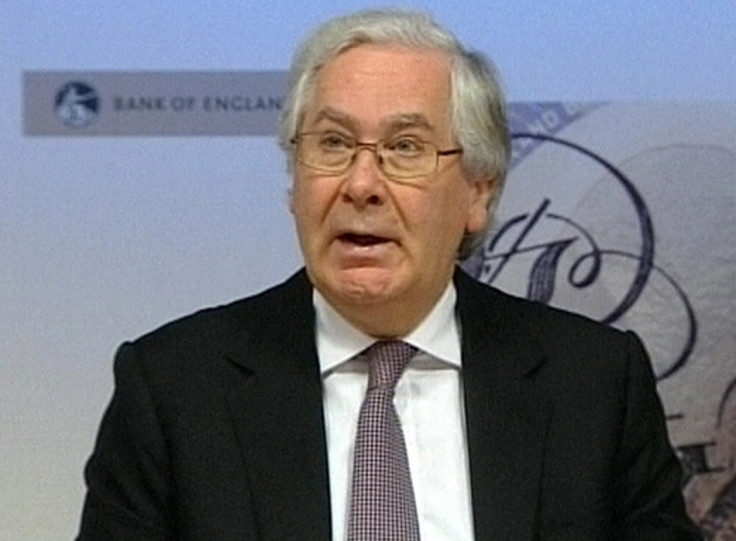Bank of England: No Base Rate Cut till Credit Easing and QE Impact Known

Bank of England policymakers will not cut the base rate for several months, if at all, despite calls from the International Monetary Fund (IMF) to do so, because they want to see what impact their new credit easing schemes and a further £50bn quantitative easing will have on the ailing UK economy.
Some monetary policy committee (MPC) members considered injecting an extra £75bn of monetary stimulus into the economy at their most recent meeting, with a worsening outlook for the UK as it wallows in another recession. The interest rate will likely stay at its record low of 0.5 percent for some time, having been there for over three years already.
"All members expected the recently announced policy initiatives to boost the supply of credit and provide a fillip to economic activity," said the minutes from the most recent MPC meeting between 4 and 5 July.
"Most members felt that the case for adding to this by undertaking further purchases of gilts, financed by the issuance of central bank reserves, at this meeting was nevertheless compelling and stronger than at the previous meeting.
"For them, while there were risks to medium-term inflation in both directions, developments since the previous meeting meant that the upside risks had declined and the possible cost of erring on the side of providing a greater stimulus was less than that of providing too little."
This extra £50bn takes the quantitative easing programme, called the asset purchase facility, to a total value of £375bn.
Since the monetary easing started in 2009, the Bank has bought up gilts in order to improve liquidity in the markets. It is hoped that this new found cash on business balance sheets will encourage them to invest in jobs and expansion.
Fears over sticky inflation and the possibility of driving up the unemployment rate postponed any increase in stimulus, but it has since fallen back sharply to 2.4 percent in June, giving the Bank room to move in printing money.
"The MPC will probably be satisfied to remain in wait and see mode over the next few months, but very low UK inflation leaves plenty of room for further action should conditions continue to deteriorate over the second half of the year," Richard Driver, analyst for Caxton FX, said.
Two credit easing schemes were introduced by the Bank in a desperate bid to kickstart the UK economy.
The Extended Collateral Term Repo (ECTR) facility sees banks able to access cheap six month loans from the Bank of England at monthly auctions.
These secured loans will be against low quality assets held by the banks, such as credit debt and loan packages, which they would not ordinarily be able to offer as collateral to borrow cheaply.
Under the second programme, called the Funding for Lending Scheme (FLS), banks are able to borrow cash from the Bank at 0.25 percent interest for loans up to the value of 5 percent of their existing lending liabilities to the real economy - businesses and consumers.
Banks will then be able to borrow more money in direct correlation to the amount they increase their lending to the real economy.
A big push from the Bank in its ever loosening monetary policy is a targeted assault on the UK's struggling economy, mired in its second recession in four years.
Unresolved crisis in the eurozone continues to weigh heavily on consumer and business confidence, with the threat of a financial catastrophe looming overhead.
Recent private industry data suggests that the recession, which started in the last quarter of 2011, will extend for the full first half of this year.
UK unemployment falls but claimant count rises
UK unemployment fell to a rate of 8.1 percent in the three months from March to May, reported the Office for National Statistics (ONS).
There were 2.58 million unemployed people, down 65,000 on the quarter.
Total pay was up 1.5 percent on the year, said the ONS, rising by 0.1 percent on the quarter and remaining outpaced by price inflation.
People out-of-work for over two years grew by 18,000 over the quarter, hitting 441,000, the highest figure for almost 15 years.
The claimant count also rose by 6,100 in June from the previous month.
"Despite another rise in UK claimants, this morning's unemployment numbers are fairly positive," Driver of Caxton FX said.
"The UK labour market is one of the few bright spots in the UK economy at present but that said, we do take the view that the dip in the unemployment rate to 8.1 percent to a nine-month low will prove temporary."
© Copyright IBTimes 2024. All rights reserved.









